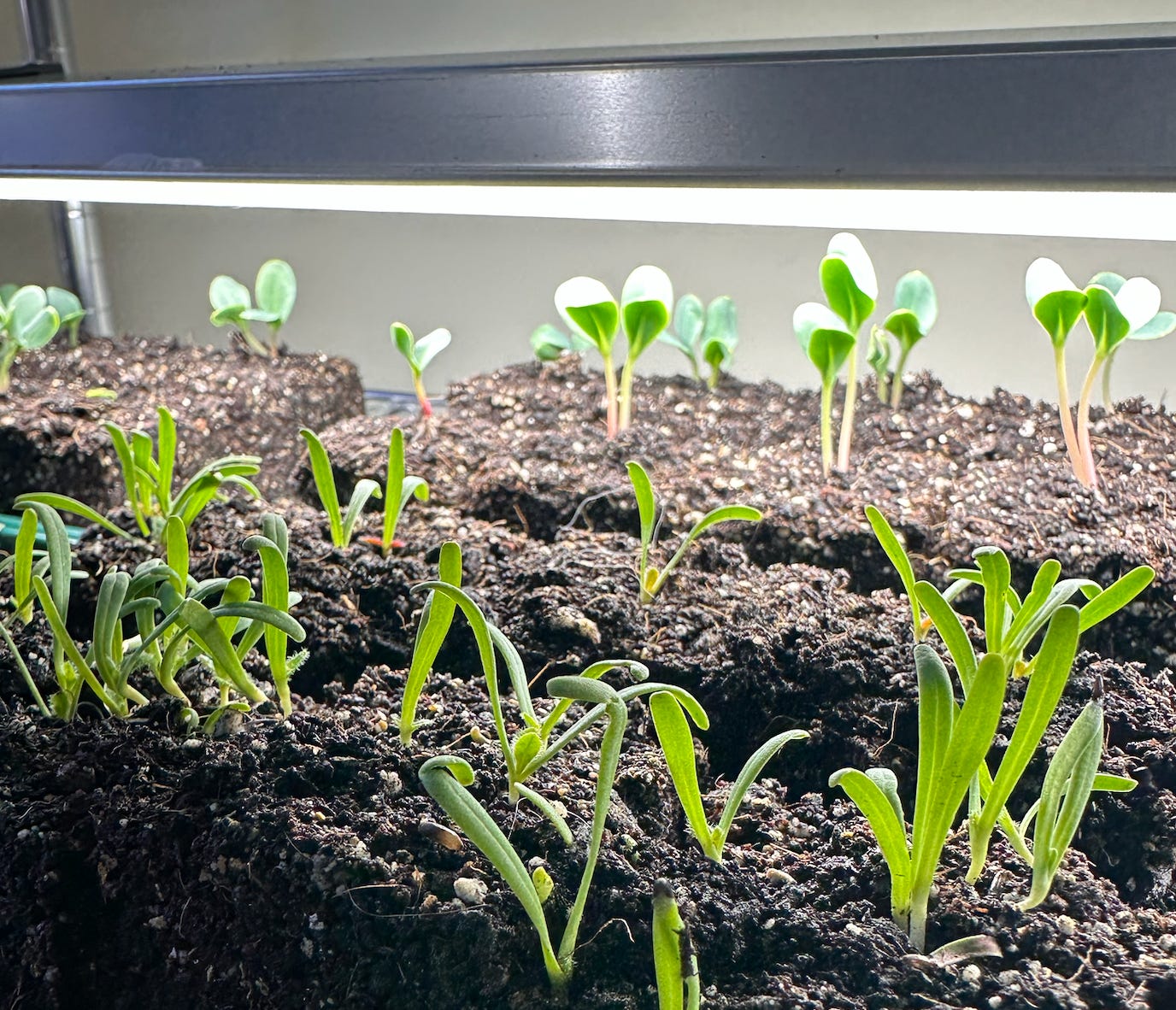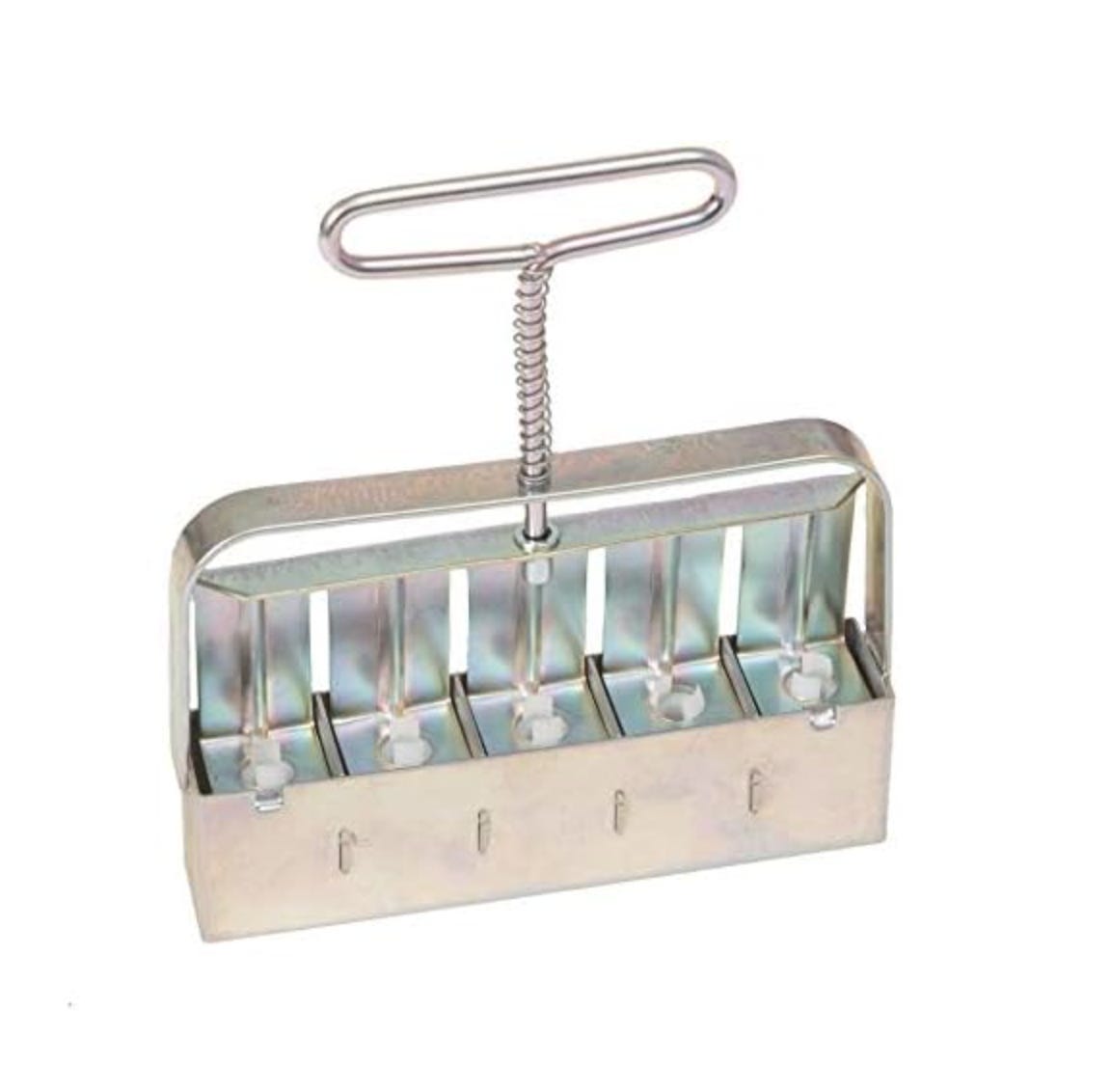If you know someone who’d like Garden Study, please forward this their way — but make sure to guide them to the specific way to *opt-in* to Garden Study emails, which you can find here.
I got into soil blocking because normal seed starting was too intimidating. I realize that sounds ridiculous, but there were just too much conflicting advice about what kind of soil trays you should use, whether you should use heat mats, what seed starting mix is best, etc. etc. In the past, it’s been so intimidating that I just *didn’t do it,* even though I knew I was making it all seem much more complex than it actually was (particularly for easy to start seeds).
But when I started getting served reels and YouTube videos on soil blocking (while watching my other dahlia-related content)….I was easily convinced. Soil blocking is pretty simple: you make a mix of high-quality potting soil plus some sort of slightly-adhesive agent (some people use wool, some people use sand, some people use coco coir, more on that later), you mix it up with a little bit of water, and then you use a tool called a soil blocker to create little cubes of soil (that pop out of the blocker with a little divot for your seeds!)
You put the blocks on trays of some sort, cover with saran wrap while the seeds germinate (in order to create some humidity), bottom water every day or so, and let your seedlings grow free. The chief benefit of soil blocking is that your seedings don’t get root bound — and will have less transplant shock when you plant them into the garden. The secondary benefit is that you can do smaller trays of varieties (each of my trays fits 16-20 blocks, which is all I really need of a type of plant) instead of a WHOLE TRAY of statice (or trying to sew multiple things in a single tray and then having them grow at different rates).
This is the video that convinced me to give it a try:
Oh, and it’s really fun??? Especially if you do it with a friend, as I did with my co-dahlia-mini-farmer Beth. On Oscar’s night, we soil blocked eucalyptus, oranmental oregano, zinnias (too early but we were eager!), celosia (same), Bells of Ireland, statice, dusty miller, snapdragons, three types of feverfew, sweet peas (could’ve sewed outside but didn’t) honeywort, and green ammi. Everything — everything — germinated and grew robust and is now out and thriving in the garden (save the zinnias and celosia, which are still under lights until it warms up just a little bit more this week).
Two weeks ago, we blocked pro cut sunflowers, three trays of cosmos, nicotiana, petunias, coneflower, asters, more zinnias, more celosia, and scarlet runner beans (which DEFINITELY didn’t need to be soil blocked but we kinda just wanted to see what would happen, and they basically exploded the blocks; it was very amusing and they’re already ready to be planted out).
Beth and I spent a lot of time researching our rack/light set-up, which trays we wanted to buy (that we could put in the dishwasher and use over and over again), which soil-blocker was worth the investment, and which soil blocking “recipe” we wanted to try. I’ve tried to collect everything below, with a few notes about what we’ve changed and are still figuring out. If you have any questions or your own advice, comment away! We’re all learning here, even if we’ve been doing this stuff for years.






